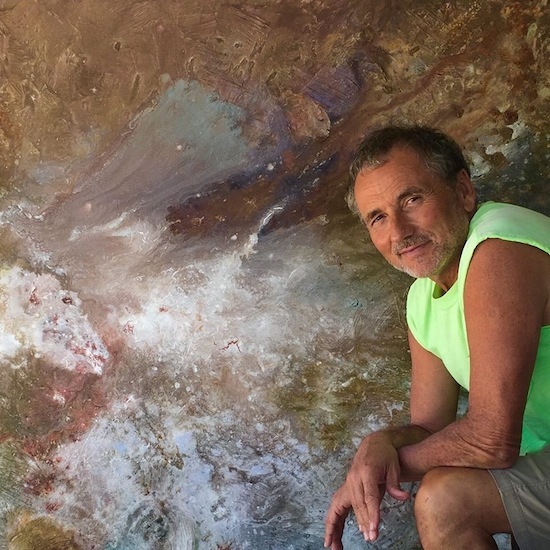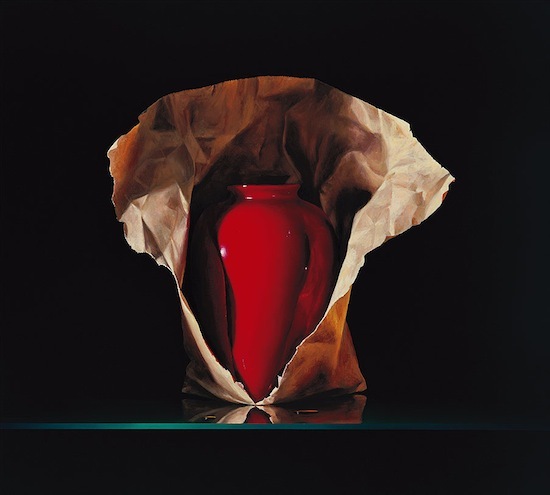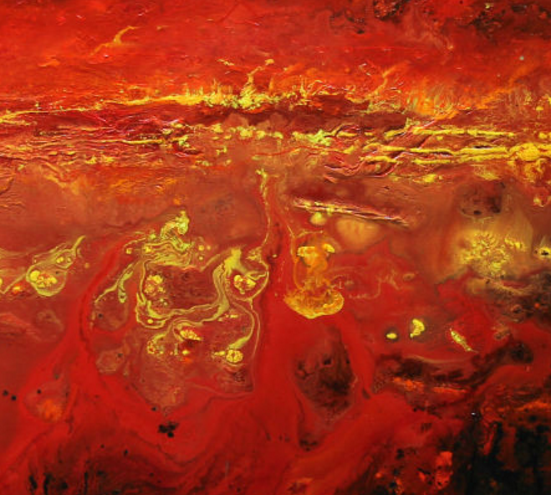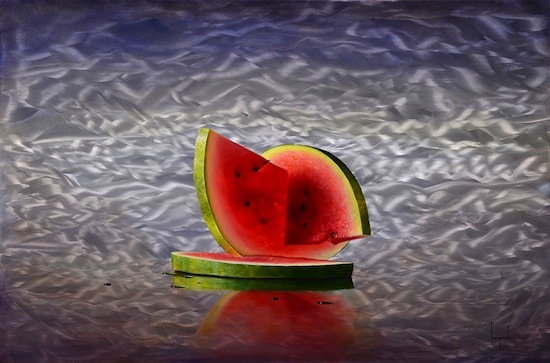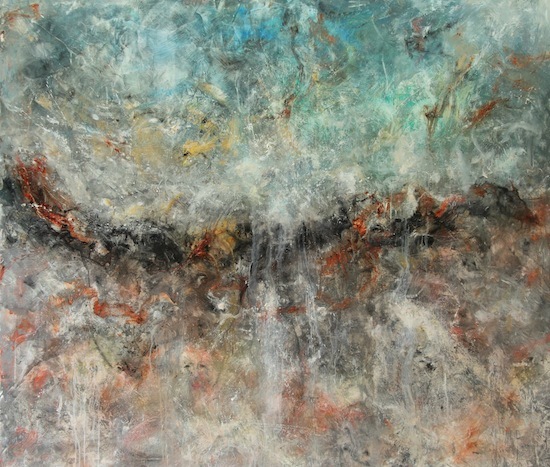After a 50 year career as a representational painter Dario Campanile has chosen a significant shift in his style. Let me reword that, he said to me in a recent conversation at his home on Maui that there was no choice, that this is something that he HAS to do in order to grow and evolve as an artist.
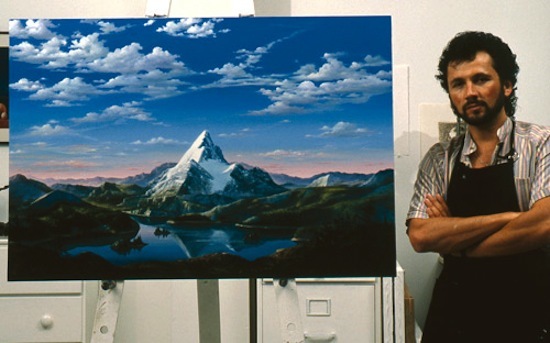
Dario Campanile with his painting for Paramount Pictures in 1986.
You have all seen Campanile's work, although you may not know it. One of his many achievements was to be chosen to paint the mountain scene for Paramount Picture's 75th anniversary in 1986 which was seen on every Paramount publication and film. In 2005 He was chosen to participate in The Missing Peace: Artists Consider the Dalai Lama. He traveled to India for a private visit with His Holiness the Dalai Lama in order to create his painting Missing Peace: Found. He is recognized as an ARC Associate Living Master. His accomplishments as a realist painter have been numerous and it has afforded him a comfortable lifestyle, but Campanile isn't satisfied and his work is moving in another direction.
Campanile agreed with me that representational, Post Contemporary painting and abstract painting are not the same thing, that different criteria need to be used when judging them but stated that this new work is very much a continuation of the old work and that the two are intertwined.
Kralik: Did you find representational painting limiting?
Campanile: I find it more challenging to do abstract. There are so many elements that take place when painting abstractly, which I do not have when I do realism. The biggest one is that when I paint abstract, I am present. When I paint realism I can think about something else. I like having that direct connection straight from consciousness to my canvas. I keep it as pure as I can.
Kralik: In the video on your website you talk about spontaneity and a direct line to consciousness as being important and different from your realist approach. How important are your classical skills to this new style?
Campanile: The experience I have over the years reflects in my abstract. I feel like I am ready now than ever before to paint abstract. The expression is different but it is all connected.
I understand when the teachers want to teach the techniques of oil paint first before you explore into wild things. I understand that abstract is more difficult than realism because you have less control and you base what you are doing completely on an instinct, a feeling, or a voice, a message that comes through you from somewhere, instead of the realism, which is academic and based on notes, information, it is a process of technique. You go step A through D and you end up with a realistic painting. It doesn't work like that with the abstract. Here you have to feel good, connected, inspired, otherwise it won't come.
Kralik: I admire that you are willing to pursue your passion after having such a great career as a realist with Lahaina Galleries. You have achieved so much. At the same time I am a bit saddened because I really love your representational work. I had hoped that you would move deeper into the representational direction. In some works you are combining these two styles. Is that something you want to continue to explore?
Campanile: I am open. At first I went to the extreme and did completely non-representational but now I am experimenting and including some representational elements into the abstract work. I am investigating that.
This form of painting for me, I want you to understand this Brandon, this began for me in the early 80's. I was working in downtown LA surrounded by contemporary artists and so I painting abstract then. I could not sell them so by the late 80's I went back to realism because I could survive.
Now, in these past three or four years I am back. It is as if I have no choice really. Every artist has to go through an evolution. Like what Picasso did when he was young. Then he went to the blue period, the rose period, to cubism and that fascinates me so much. That an artist can shift, be so detached that he can master something but not just sit on it the rest of his life. Once he mastered it, he could leave it for new horizons. To me that is the highest you can get by being an artist. Never stop the search and find new ways to express, reinvent yourself.
A lot of people are disappointed. I had a market, but I said to myself that, if, by changing my style means less income, if it means letting go of a beautiful home, which I did, to paint what I want, then it is worth it I am 67 years old. I have to paint something I have passion for! In 20 yeast I may not be able to paint. This is the time to do what I want and that is what I am doing.
Kralik: What is your favorite period of Picasso, just out of curiosity?
Campanile: I like the blue period, these pastellish colors, all the circus motifs and things, I love that. Cubism, a little less. I find Picasso more authentic in his blue period.
Kralik: The paintings that people generally like the best of Picasso's are the blue and the rose period. Those are the most human paintings he did and among his most valuable at auction.
Campanile: Yes, I know.
Kralik: It was interesting that Picasso was able to reinvent himself all those times, up to a certain point, but, what if he had gone deeper into the blue period? Would his paintings have become trite? Kitsch? As beautiful as they are would people have just moaned, "Ohhh noo, another circus painting" ?
Campanile: An interesting question. He knew that once you master it you have to leave it because that is the depth of art, when you are painting something you have done so well for so many years and you stay with that for a security blanket. I used to paint a lot of surrealism, was really into surrealism but now I could not paint that. You cannot fake it. I had a feeling for it before, this imagination I had and was able to translate it onto a canvas but now if I were to paint surrealism, I would be faking it. I am not the same guy. It is done, it is gone and this fascinates me.
The most fun for me is the process of doing it, the execution. I love realism, I have to say, but what I feel when I paint, the journey, painting abstract is such a high, an amazing experience, and I most enjoy the process of doing it over the result. I tap into the unconscious and that has affected me. Each painting goes through many stages, layers, and I keep working, on and on and on so under each painting are many others.
The work of Dario Campanile can be seen at Lahaina Galleries

